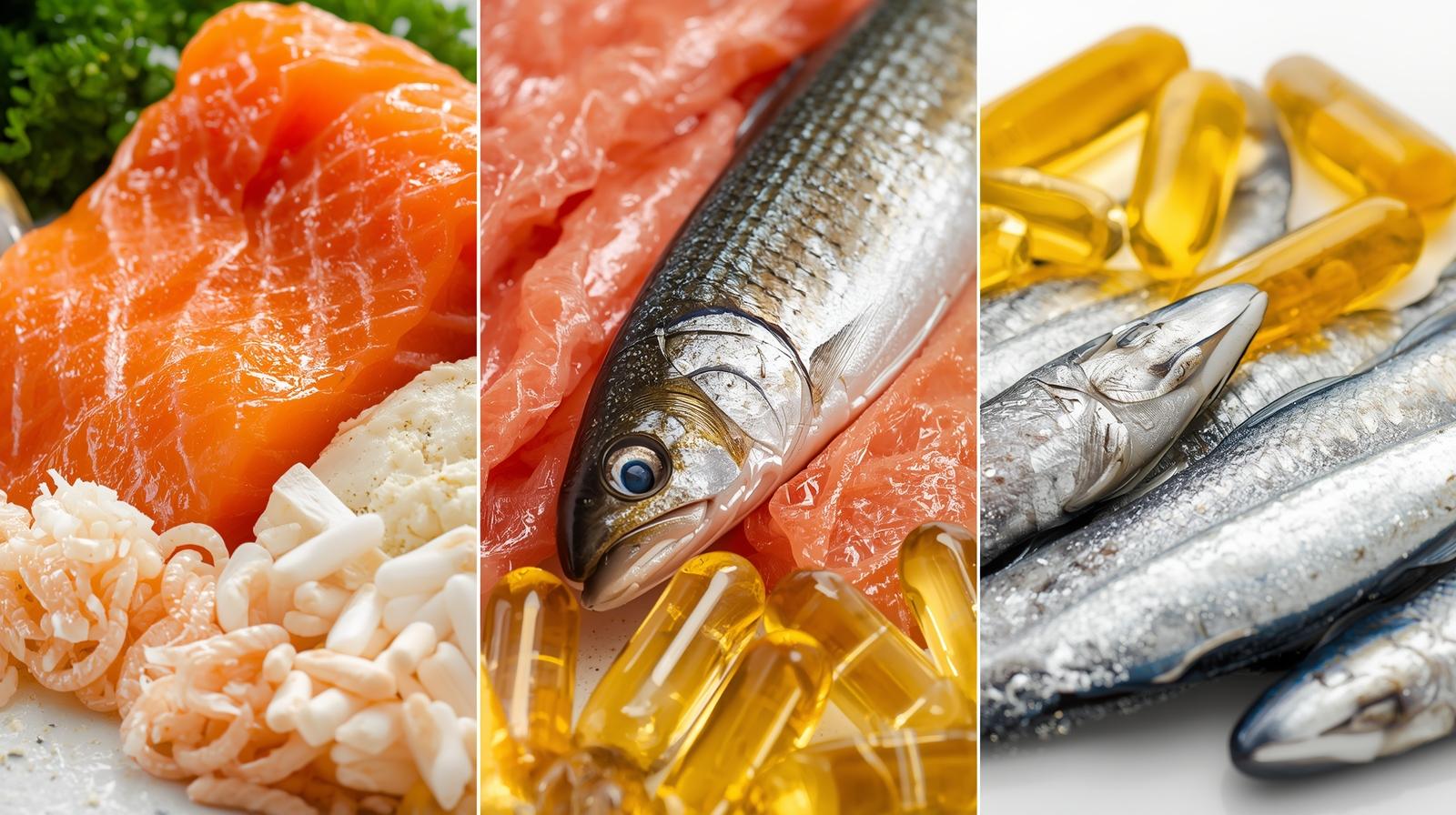What is Omega-3?
Omega-3 fatty acids are a type of polyunsaturated fat that are essential for human health. “Essential” means your body cannot produce them on its own; you must get them from your diet.
The three most important types are:
- ALA (Alpha-Linolenic Acid): Found primarily in plant sources like flaxseeds, chia seeds, walnuts, and canola oil. Your body can convert ALA into EPA and DHA, but the process is very inefficient (typically less than 10% conversion).
- EPA (Eicosapentaenoic Acid): Found primarily in fatty fish and fish oil. Known for its potent anti-inflammatory effects and role in cardiovascular health.
- DHA (Docosahexaenoic Acid): Also found in fatty fish and fish oil. Crucial for brain development, cognitive function, and eye health.
For the purposes of muscle building and performance, EPA and DHA are the most relevant and directly beneficial.
The research in this area is promising and points to Omega-3s being a valuable supplement for athletes and those looking to build muscle, not just for general health.
1. Enhancing Anabolic Sensitivity (Muscle Protein Synthesis)
This is the most significant finding. Research suggests Omega-3s make your muscles more responsive to the anabolic (muscle-building) signals from protein intake and exercise.
- The Mechanism: Omega-3s, particularly EPA and DHA, are incorporated into the phospholipid layer of cell membranes. This makes the membranes more fluid, which may improve cell signaling. For muscle cells, this means better communication from anabolic triggers like insulin and amino acids (the building blocks of protein).
- The Evidence: A seminal study published in the American Journal of Clinical Nutrition found that supplementing with 4g of fish oil per day for 8 weeks significantly increased muscle protein synthesis (MPS) in young and older adults in response to amino acid infusion and insulin. Essentially, the Omega-3s “primed” the muscle to build protein more efficiently from the same stimulus.
2. Reducing Muscle Soreness and Aiding Recovery
Omega-3s are powerfully anti-inflammatory.
- The Mechanism: Intense exercise causes muscle damage and inflammation (acute inflammation is a normal part of the rebuilding process). EPA and DHA are used to produce molecules called resolvins and protectins that actively resolve inflammation, helping to turn it off once it’s done its job.
- The Evidence: Multiple studies have shown that Omega-3 supplementation can lead to reduced markers of muscle damage (like Creatine Kinase) and decreased perceived muscle soreness (DOMS – Delayed Onset Muscle Soreness) after strenuous exercise. This allows for better recovery and the ability to train hard again sooner.
3. Potential Role in Muscle Size and Strength
While more research is always needed, some studies link Omega-3s to direct improvements in body composition.
- The Evidence: Some studies, particularly in older populations (who are at risk of sarcopenia, or age-related muscle loss), have shown that fish oil supplementation can lead to increases in muscle mass and functional strength when combined with resistance training. The evidence in young, trained athletes is less conclusive but still points to a supportive benefit for recovery and anabolic efficiency.
Dosage
For Athletes, Muscle Building, and Optimizing Recovery:
- Recommendation: 1,000 – 2,000 mg of combined EPA + DHA per day.
- Many successful studies use a dose in this range. A common and effective dose is 1-1.5 grams (1000-1500 mg) of combined EPA/DHA daily.
- It’s best to split the dose (e.g., take one capsule with breakfast and one with dinner) to maintain stable levels in your body.
